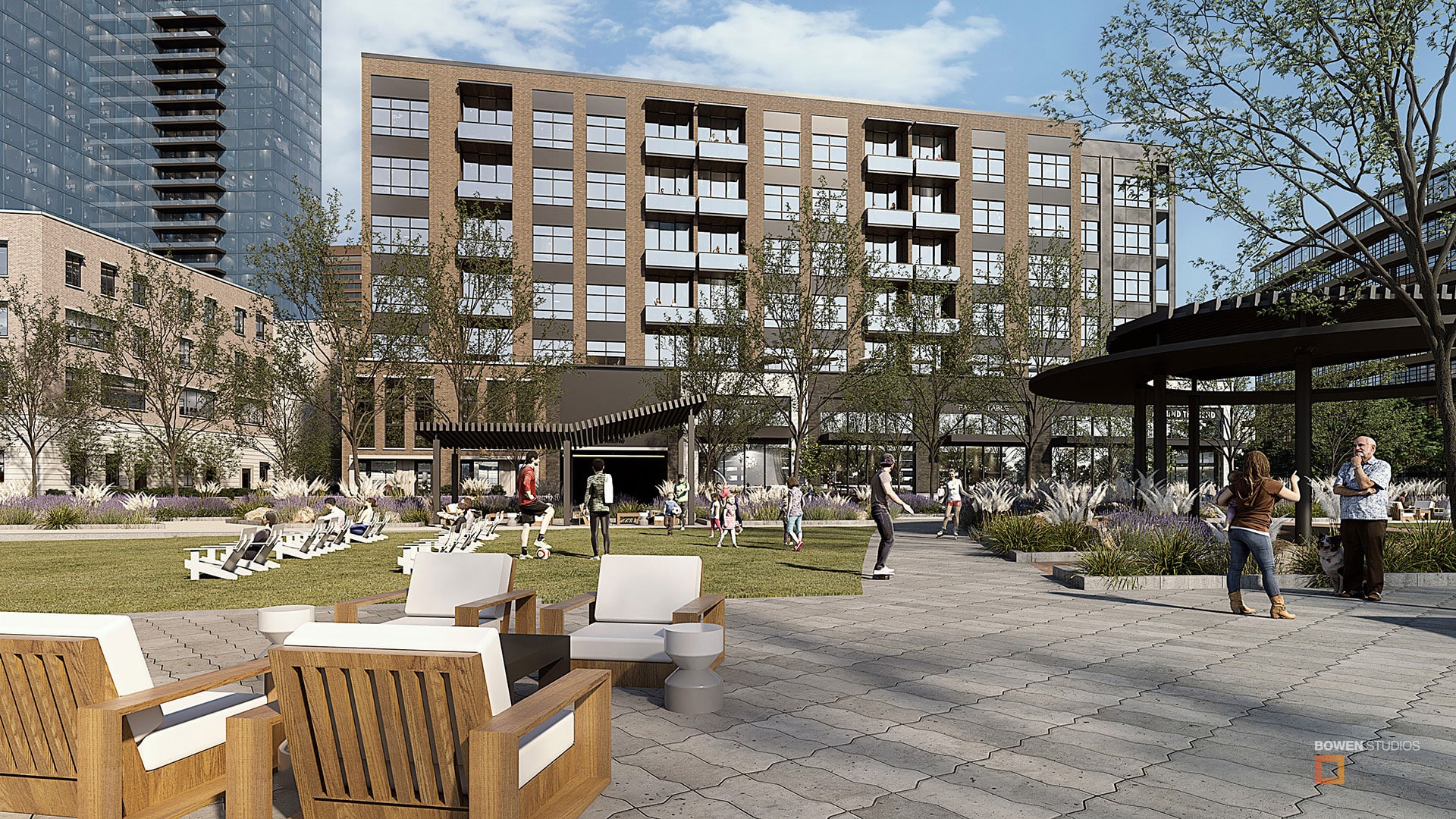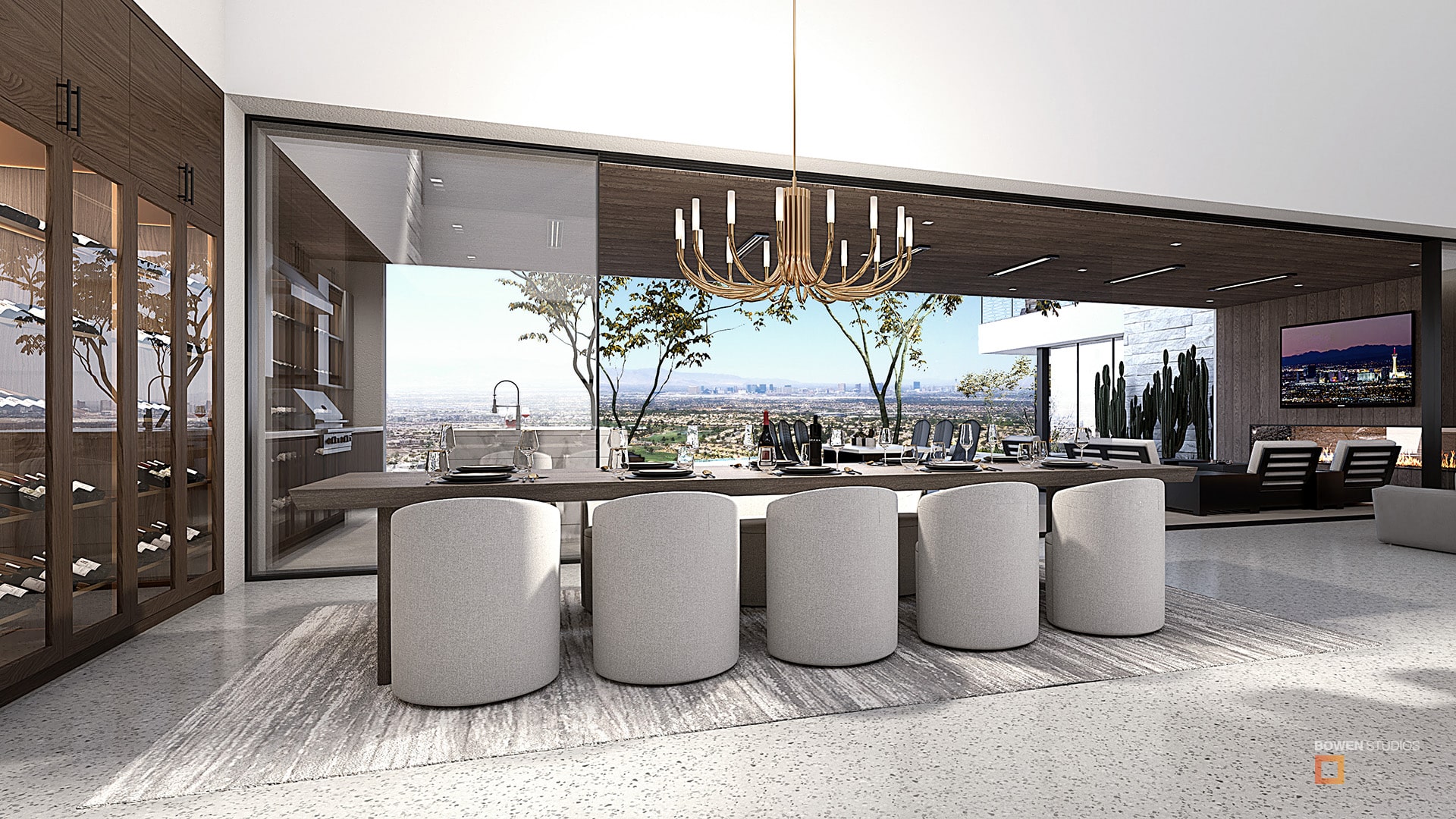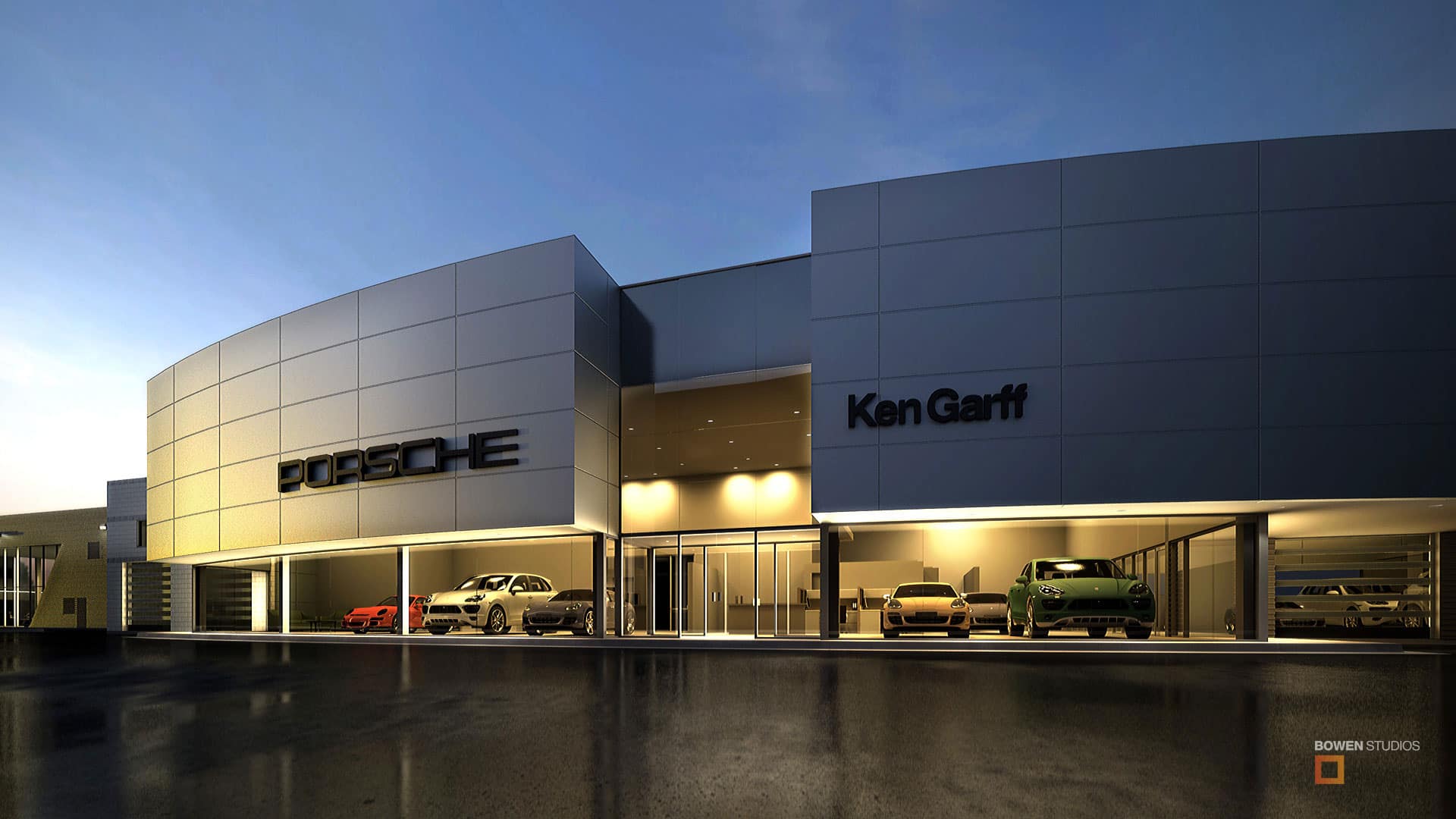3D architectural visualization, sometimes called archviz, is the process of creating visual representations of architectural designs before they are built. It combines art and technology to produce realistic and conceptual imagery, including 3D renderings, animations, virtual tours, and interactive models. This allows architects, developers, and clients to preview, analyze, and refine designs before construction begins.
Architectural visualization is experiencing a paradigm shift, reshaping how architects, designers, and developers conceptualize and engage with built environments. This transformation is largely driven by advancements in real-time Rendering, AI-assisted image editing, and immersive technologies such as virtual reality (VR) and augmented reality (AR). As these innovations continue to evolve, they are redefining the creative and technical processes of architectural rendering designs.
Leading global cities such as New York City, Los Angeles, Chicago, San Francisco, Miami, Boston, Seattle, London, Dubai, Singapore, and Tokyo are at the forefront of architectural innovation. These urban centers are home to renowned architectural firms and cutting-edge developments, driving the demand for high-quality 3D visualization to support everything from skyscrapers and urban planning projects to luxury real estate and sustainable design initiatives.
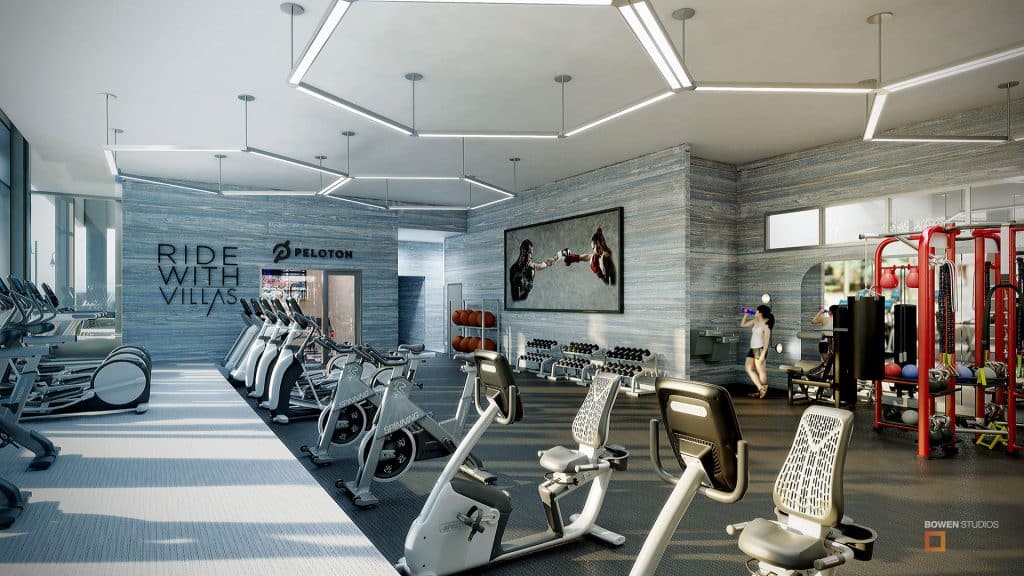
Who Uses 3D Architectural Visualization?
Architectural Visualization is an essential tool for architects and interior designers, enabling them to present design concepts with clarity and precision. By creating photorealistic renderings and immersive visualizations, professionals can communicate ideas more effectively, streamline client approvals, and refine project details before construction begins. Similarly, real estate developers and marketers leverage high-quality visuals, virtual tours, and interactive walkthroughs to enhance pre-sales efforts, attract potential buyers, and showcase properties in their best light.
Beyond architecture and real estate, engineers and urban planners rely on 3D architectural visualization to model large-scale infrastructure projects and simulate environmental impacts. This technology allows them to assess spatial feasibility, optimize designs, and address potential challenges before breaking ground. Film, TV, and video game studios integrate visualization architecture techniques to construct digital sets and virtual environments. Productions like The Mandalorian have successfully used these tools to create immersive backdrops for storytelling, demonstrating their value beyond traditional built environments.
3D visualization also plays a crucial role in automotive and product design, where it helps develop digital prototypes, refine design iterations, and accelerate production timelines. Additionally, virtual reality and metaverse developers utilize these techniques to build interactive, immersive experiences, shaping the future of digital environments. Whether for physical or virtual spaces, architectural visualization continues to push the boundaries of design, innovation, and communication.

The Benefits of Architectural Visualization
Advantages over traditional 2D drawings and physical models include:
- Enhanced Visualization: Rendering provides photorealistic visuals, allowing a more accurate representation of the final product.
- Improved Collaboration: These tools facilitate better communication among team members through shared, interactive models.
- Time and Cost Efficiency: Realistic imagery reduces the need for guessing what the final product will be, saving time and money on the job site.
- Design Flexibility: The ability to quickly iterate on designs enables more innovative solutions and rapid problem-solving.
- Marketing and Sales – Photorealistic renders and interactive tours make projects more appealing to potential buyers and investors.
These advancements are transforming the architecture, engineering, and construction industries by streamlining processes and enhancing the quality of design outcomes. Future AI-driven advancements will refine lighting accuracy, generate realistic textures instantly, and even suggest design alternatives based on data-driven insights. However, while AI enhances visualization and efficiency, it does not determine structural integrity, material feasibility, or compliance with building codes—these remain the responsibilities of architects, engineers, and construction professionals. AI will serve as a powerful assistant, streamlining workflows and offering intelligent suggestions, but human expertise will continue to be essential in ensuring safe, functional, and code-compliant designs.
How to Become an Architectural Visualization Artist
The demand for skilled architectural 3D visualization artists is rising as architects, interior designers, and real estate professionals increasingly rely on high-quality visual presentations. To work in this field, you’ll need a strong blend of artistic sensibility and technical expertise. Mastery of 3D modeling software such as 3ds Max, Blender, Rhino, or SketchUp is essential, along with proficiency in rendering engines like V-Ray, Corona Renderer, and Lumion to create photorealistic architectural and interior imagery.
A deep understanding of lighting, materials, and textures is crucial for achieving realism in exterior and interior renders. A strong eye for design, including knowledge of interior design principles, furniture placement, and material selection, will help bring spaces to life. Creating inviting, well-balanced compositions that highlight spatial flow and ambiance is invaluable. Familiarity with procedural tools like Houdini can enhance workflow efficiency, especially when handling complex environmental elements such as natural light, reflections, and detailed surface textures. AI-powered tools and parametric design software can further streamline modeling and visualization processes.
A firm grasp of composition, perspective, and color theory will improve the aesthetic quality of your work, ensuring that your renderings effectively communicate architectural and interior design concepts. Experience with computer-aided design (CAD) software, such as AutoCAD and Revit, is highly beneficial, as architectural visualization often involves translating technical drawings into compelling 3D representations.
While formal education in architecture, digital design, or computer graphics is a serious advantage, some visualization artists are self-taught, leveraging online courses, workshops, and tutorials to refine their skills. Developing a diverse and polished portfolio showcasing a range of projects that highlight architectural and interior visualization expertise is key to attracting clients or employers.
Engaging with professional communities such as AIGA can provide valuable insights and networking opportunities. Participating in industry forums, attending architectural and interior design conferences, and collaborating with professionals in the field will help you stay updated on emerging trends and technologies, ensuring continued growth in this dynamic and evolving industry.
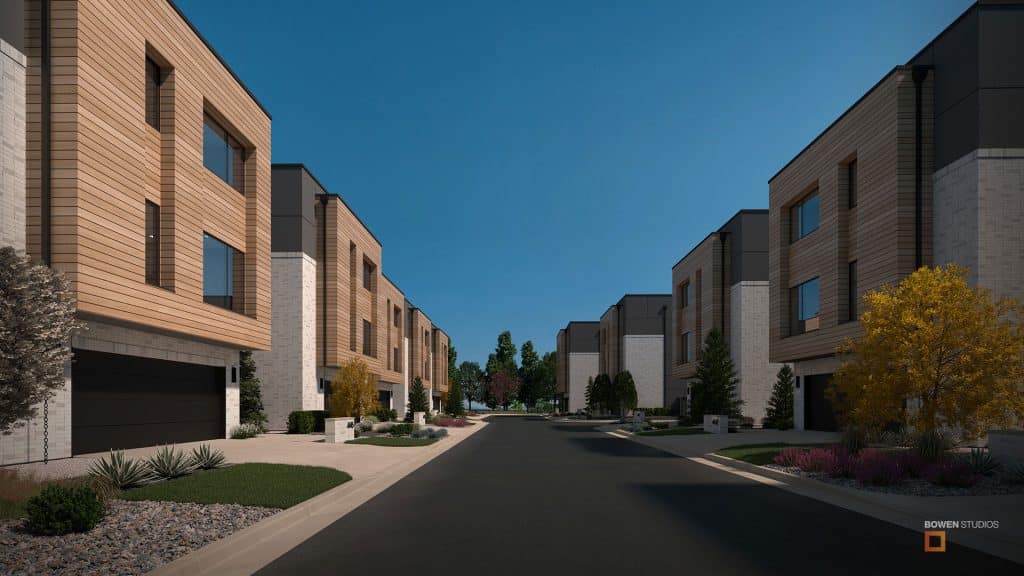
Career Opportunities and Industry Trends
With industries rapidly adopting 3D visualization, career paths are expanding:
- Freelance & Studio Work – Showcase your portfolio on platforms like ArtStation, Behance, and TurboSquid.
- Metaverse & Virtual Realities – Work on virtual cityscapes, digital twins, and immersive experiences.
- Sustainability & Smart Cities – Contribute to eco-conscious architecture and urban planning.
- AI-Driven Visualization – Utilize generative AI to automate asset creation and improve efficiency.
Outsourcing 3D Rendering and Its Real Value
Architects and design firms increasingly use specialized 3D rendering companies to streamline workflows and elevate project presentations. Architectural visualization is just one segment of the expansive 3D design industry.
While quick and cheap rendering services are widely available online, they often come at the expense of accuracy, customization, and overall quality. Professional 3D rendering firms bring expertise beyond basic modeling—integrating parametric design, material simulation, and lighting analysis to ensure every visualization is aesthetically compelling and technically precise.
By collaborating with dedicated 3D artists, architects can focus on design innovation while ensuring their projects are presented with the highest realism and detail. Whether for conceptual development, interior staging, or large-scale urban planning, outsourcing architectural visualization to a professional team delivers higher value, reduces costly revisions, and provides a competitive edge in the industry.
Looking to Enhance Your Architectural Presentations? Explore our Bowen Studios architectural visualization and 3D Rendering services. Learn how expert 3D Renderings can help you communicate with clarity and precision. Give us a call. We are always full of ideas!


